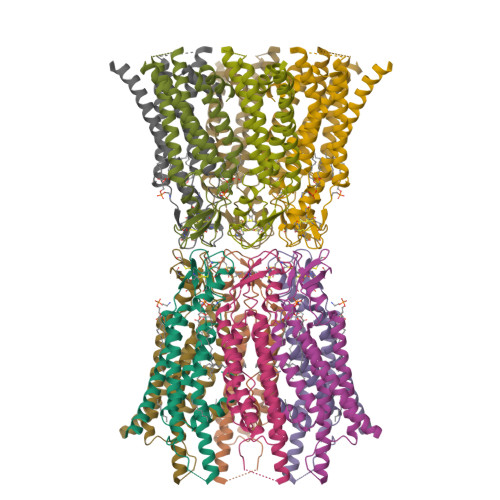Structures of wild-type and a constitutively closed mutant of connexin26 shed light on channel regulation by CO 2.
Brotherton, D.H., Nijjar, S., Savva, C.G., Dale, N., Cameron, A.D.(2024) Elife 13
- PubMed: 38829031
- DOI: https://doi.org/10.7554/eLife.93686
- Primary Citation of Related Structures:
8Q9Z, 8QA0, 8QA1, 8QA2, 8QA3 - PubMed Abstract:
Connexins allow intercellular communication by forming gap junction channels (GJCs) between juxtaposed cells. Connexin26 (Cx26) can be regulated directly by CO 2 . This is proposed to be mediated through carbamylation of K125. We show that mutating K125 to glutamate, mimicking the negative charge of carbamylation, causes Cx26 GJCs to be constitutively closed. Through cryo-EM we observe that the K125E mutation pushes a conformational equilibrium towards the channel having a constricted pore entrance, similar to effects seen on raising the partial pressure of CO 2 . In previous structures of connexins, the cytoplasmic loop, important in regulation and where K125 is located, is disordered. Through further cryo-EM studies we trap distinct states of Cx26 and observe density for the cytoplasmic loop. The interplay between the position of this loop, the conformations of the transmembrane helices and the position of the N-terminal helix, which controls the aperture to the pore, provides a mechanism for regulation.
Organizational Affiliation:
School of Life Sciences, University of Warwick, Coventry, United Kingdom.

















